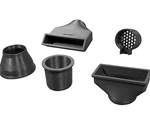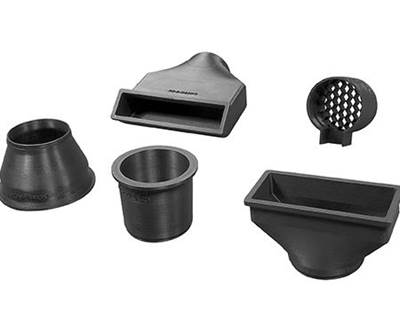1st Carbon Fiber 3D Printer Is Here With Another On The Way
The first 3D printer capable of printing objects using composite materials, including continuous carbon fiber, will see commercial fruition mid-year, while another such system is well under development with a longer lead time to market.
Pre-orders are being placed for what is said to be the world’s first 3D printer that can print objects using composite materials, including continuous carbon fiber. The Mark One from Boston-based Mark Forged will be commercially available mid-year at a $5000 price tag. Meanwhile, another 3D printer that also uses carbon fiber-reinforced thermoplastic filament is well under development at Canada-based Freespace Composites with a longer lead time to market.
The Mark One is a compact machine with a build size of 22.6 x 14.2 x 12.7 in. that employs a FDM-type technology. The process actually utilizes two different extraction methods: Fused Filament Fabrication, at a resolution of 100 microns, and Composite Filament Fabrication, at a resolution of 200 microns, depending on the material used. At the moment, Mark Forged is making four materials available with initial pricing included:
• Carbon Fiber CFF Filament, priced at $550/lb, is said to print like plastic but stiffer than aluminum. This patent-pending composite is 20 times stiffer than ABS, and is stronger than 6061-T6 aluminum by weight. It is said to be ideal for fixtures, jigs, and parts that need the highest strength-to-weight ratio.
• Fiberglass CFF Filament, priced at $199/lb, is touted as a perfect alternative when the strength of Carbon Fiber Filament are needed, but the stiffness and weight are less critical. Also patent-pending, it uses the same Continuous Filament Fabrication process for impressive strength, but at much lower cost.
• Nylon FFF Filament, priced at $99/lb, is reportedly “fantastically” flexible, but tough as nails, and boasts great fatigue and impact resistance. It is said to be well suited for use as an outer protective layer to keep fixtures and tooling from scratching sensitive parts and is also viewed as an great choice for tabs, clips, and mechanical fasteners.
• PLA FFF Filament, priced at $22/lb, is biodegradable with minimal shrinkage. It is targeted for the production of quick prototype for testing form and fit.
Yet another interesting feature of the Mark One is a kinetic coupling incorporated for the printer’s build platform which allows the build bed to remain level—within 10 microns, during multiple project builds without the need for repeated adjustment.
Meanwhile, Freespace Composites is developing its own 3D printing technology that employs a proprietary process that uses carbon fiber-reinforced thermoplastic filament that is “placed optimally and continuously” in a 6-axis printer in “free space” that allows the machine to produce, ultimately, a continuous fiber structure. This system is said to allow for more complex parts to be built with multiple parts that are subsequently consolidated together. Further, additional heads will allow in-process stitching and weaving of fibers.
President and composites specialist Nathan Armstrong believes this technology could substantially change how complex structural composite parts are manufactured. Users could simply feed their 3D design into a “feedback loop” software Armstrong developed, and than the software iteratively calculates part optimization vs. fiber placement to make the part printable on a 3D printer. “It skips the entire traditional engineering design process and produces highly optimized parts with zero material waste.”
The company is looking to develop a variety of material inputs for its system, including glass and carbon fiber and a variety of thermoplastic and thermoset materials. In the near term, they are working with easier to process thermoplastics, such as PLA, along with carbon and glass fibers. Their strategy is to work with prospective end users throughout this development process including material qualification. Freespace Composites is aiming to commercially launch the combined design/3D printing system in about three years.
http://www.youtube.com/watch?v=srHxvhto3eI
Read Next
Additive Manufacturing: Materials for ‘Real-World’ Parts
Developments in materials have helped pave the way for processors to make ‘real world’ parts from what is collectively known as 3D printing. Here’s a comprehensive review of the materials available.
Read MoreTroubleshooting Screw and Barrel Wear in Extrusion
Extruder screws and barrels will wear over time. If you are seeing a reduction in specific rate and higher discharge temperatures, wear is the likely culprit.
Read More




















